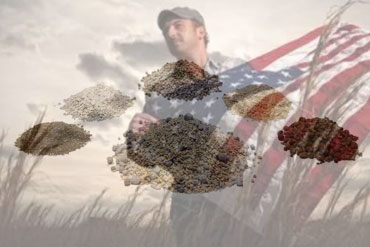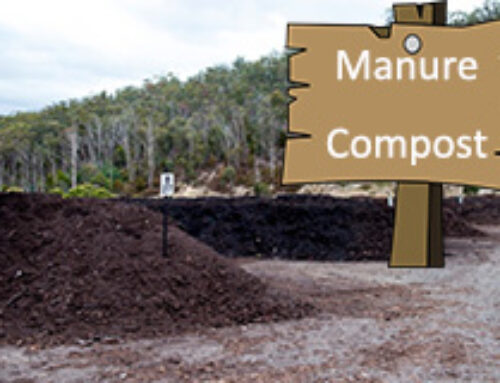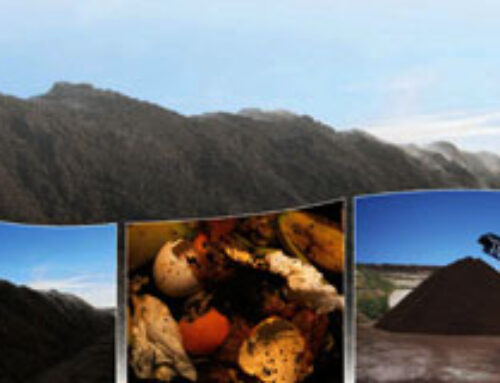Abstract:
US Local Policy Supports Organic Fertilizer
Technical Feasibility of Starting Your Own Organic Fertilizer Production Business in the US
Environmental Feasibility of Setting Up Organic Fertilizer Plant in the United States
Economic Feasibility Analysis on the Initial Small-Scale Organic Fertilizer Production
The progress direction of fertilizer, according to the report of the FAO fertilizer yearbook, is geared to achieve multi-component, multi-function, high-efficiency, high-concentration, and non-pollution development. Nowadays, the environmentally safe fertilizer – an organic fertilizer that maximizes crop yields and minimizes the adverse effect on the environment and water supplies, has become a general trend all over the world, especially in the US, Canada, Australia, and some European countries.
- the soaring cost and the adverse effect of chemical-based fertilizer logically cause this increase in organic fertilizer production.
- health-conscious consumers have preferred organically-grown products that have pushed demand for organic food.
Here, we will discuss the pre-feasibility of building an organic fertilizer plant in the United States by analyzing America’s organic fertilizer market situation, local policy support, the advantages of producing organic fertilizer, and the benefits of organic fertilizers, etc. The aim of the feasibility analysis is to determine if an organic fertilizer business opportunity is practical and viable.
US Local Policy Supports Organic Fertilizer
The US government incentives are the other factor driving the market growth of organic fertilizer. As early as 2002, America issued a bill for farm security and rural investment in order to significantly increase the protection effort for the agroecological environment and facilitate the sustainable development of agriculture. Many areas carried out protective technology in agricultural production actively, including promoting the use of harmless organic fertilizer and soil testing and fertilization. Moreover, local authorities attach great importance to strengthening the agricultural input and establishing the consciousness of farm product safety. Among the resources for producing organic fertilizer, animal manures occupy a large proportion and bring a bigger risk of environmental pollution, therefore, the government legislated strict laws for animal waste management so as to urge the harmless treatment and resource utilization of livestock and poultry manure. In addition, the local government has also launched a series of laws, regulations, and standards according to the requirements of the EPA(Environmental Protection Agency of the United States), aiming at achieving ecological sustainability in the agriculture industry.
Technical Feasibility of Starting Your Own Organic Fertilizer Production Business in the US
US organic fertilizer producers have mastered more advanced production technology and valuable know-how through long-term development, exploration, and improvements in the past years. The technological superiority guarantees the practical and viable organic fertilizer business opportunity in a long run in the US.
–Organic fertilizer manufacturing process and production equipment
In general, the organic fertilizer production process contains several main steps- from raw materials handling to the finished product package, shown as follows:
Raw materials crushing → composting → mixing → granulating → drying/cooling → packaging
According to the above process, we provide the corresponding equipment with high quality and excellent performance for a complete plant, taking a 1-3 ton/hour organic fertilizer production line for example:
Raw materials composting: composting is the breakdown of any organic materials into a dark soil-like product. Various organic waste materials produced by farming, communities such as husk, affluent, vegetable waste, stubble, etc. can be used to produce compost.
When talking about organic materials, we have to admit that it is the plentiful raw materials that make the organic fertilizer business popular, prosperous, and successful in the United States.
In America, there are plenty of raw materials suitable for composting, bringing vast development potential for the organic fertilizer industry. To be specific, raw materials can be broadly classified into the following categories:
* Agricultural and garden wastes: including crop straw, bean pulp, cotton seed meal, fallen leaves, fruit shells, etc.
* Feces of livestock and poultry: chicken manure, pig manure, cow dung, etc.
* Industrial waste: vinasse, vinegar residue, cassava residue, sugar residue, etc.
* Household refuse kitchen garbage, etc.
* Municipal sludge: river mud, sewer sludge, etc.
Ingredients blending: it uses organic fertilizer for maximum nutrition in the farms/gardens by adding the nutrients after the soil test. A horizontal blender promises a balanced blend of compost with major nutrients (N, P, K) or with trace elements. Two sets of horizontal blenders should be equipped in a 1-3 ton/hour organic fertilizer production line. These raw materials needed for organic fertilizer production have an extensive range, but due to the source of diversity, without thoroughly decomposing or sterilization and disinfection, they would bring lots of plant diseases and insect pests for agriculture, especially in commercial composting facilities. That is to say, you will need compost turners to turn the pile. A small compost turner is ideal in a 1-3 ton/hour organic fertilizer production line.
Granulation: Wet type fertilizer granulation system provides advanced technology which is easy to realize and saves costs for commercial organic fertilizer production in the United States. New type granulator: with a high granulation rate, it can granulate most biodegradable organic materials into safe and non-toxic organic fertilizer for sale, which makes it suitable for large-scale organic fertilizer production, saving cost and promoting working efficiency.
Organic fertilizer drying: drying being one of the most energy-intensive operations is of great importance in the fertilizer industry. It allows more efficient exploitation of fertilizer plants and increases their profitability. In waste management, drying is one of the most common methods used to prevent environmental problems associated with the application of raw manure. Rotary dryers are often used for drying in fertilizer industries.
Cooling process: fertilizer manufacturers cool the granular product before packaging usually in the range of 30-55℃.
Screening and Packaging
Environmental Feasibility of Setting Up Organic Fertilizer Plant in the United States
In recent years, with the awareness of environmental protection and organic waste recycling technology progress, the concept of material recycling has become the consensus of the environmental industry. Among the recycling methods, Turning organic waste into organic fertilizer is considered to have the potential for the sustainable development of US society.

It is the environmental benefits of organic fertilizer that makes the noticed increase in organic fertilizer production took place in America.
▽ the development of the organic fertilizer industry fundamentally solves the problem of pollution to the atmosphere, water, and soil environment caused by organic waste materials, stimulating the development of green food and organic food.
▽ organic fertilizer has a very great positive influence on soil structure and nutrients, energy, enzyme, moisture, aeration, and microbial activity because organic matter is the core element of soil and the main material base of soil fertility.
▽ organic fertilizer contains abundant nutritional ingredients without pollution and harm, including nitrogen, phosphorus, calcium, another medium element, and microelement, which provide the essential conditions for producing high-yield, high-quality, and non-pollution green food.
The United States is facing a huge solid-waste disposal problem, especially in urban areas. And it will take a concerted, society-wide effort to solve this problem. Results show that the current situation of organic waste management in the United States could be improved, through actions of both the municipality and the citizens.
From the three above-mentioned benefits of organic fertilizer to the environment, crops, and soil, we can conclude that composting and organic fertilizer business provides a profitable direction to fix America’s waste problem, being sustainable.
Economic Feasibility Analysis on the Initial Small-Scale Organic Fertilizer Production in America
When starting a new business, economic factors would affect/limit production technologies. In the organic fertilizer industry, for new investors, the costs of implementing a large-scale organic fertilizer plant would be extremely prohibitive. Therefore, starting at a smaller level, the opportunity to recover those costs is greater in the long run.
–space needed
Fermentation stage: 20*5m
Granulating stage: 40*18m
The small-scale unit is expected to require a limited amount of space which reduces the total land leasing fee for decision-makers.
—workers needed
A small-scale organic fertilizer plant is an auto-processing line. Whirlston equipment is compact, robust, and flexible in operation. 4 workers are enough to operate and to keep the continuous operation at a small scale. The wages for the employees are based on the standard salary for employment in the US. The small-scale project saves the total employee costs due to fewer workers needed in this plant.
◇1 worker for compost turner operation in the fermentation stage
◇1 worker for feeding raw material
◇1 worker for the packing machine
◇1 worker for the control cabinet

Small-scale organic fertilizer manufacturing system with the initial equipment investment ranging from 40,000-50,000 dollars, being a cost-effective start-up. Small-scale plant with appropriate method and technology is vital to economic benefit. It requires a relatively small initial investment (mail to info@organicfertilizermachine.com to get the latest quotation), which makes it more flexible to variations in production parameters and market fluctuations.
The production capacity has a very strong influence on the production cost of organic fertilizer. A mini organic fertilizer project plant with an 800kg/h output is flexible in operation and affordable to decision-makers.
Small-scale production system requires less complicated and less expensive processing technologies. The whole line is easy to be installed, even in rural areas (plentiful locally available raw materials ). This may further lower the capital cost and reduce the transportation cost of both organic materials and generated compost fertilizer as well as improve the overall efficiency of the market delivery.
Conclusion
The establishment of organic fertilizer plants in the US is estimated to generate income exceeding all costs, which is not just about high economic returns, but also about the ecological effects and social benefits. What’s more, America has plentiful raw materials of organic fertilizer, the national consciousness of going green and environmental protection, and extensive market projects, so building an organic fertilizer plant is a perfect investment with the support of advanced processing techniques and high-grade organic fertilizer production machines.








